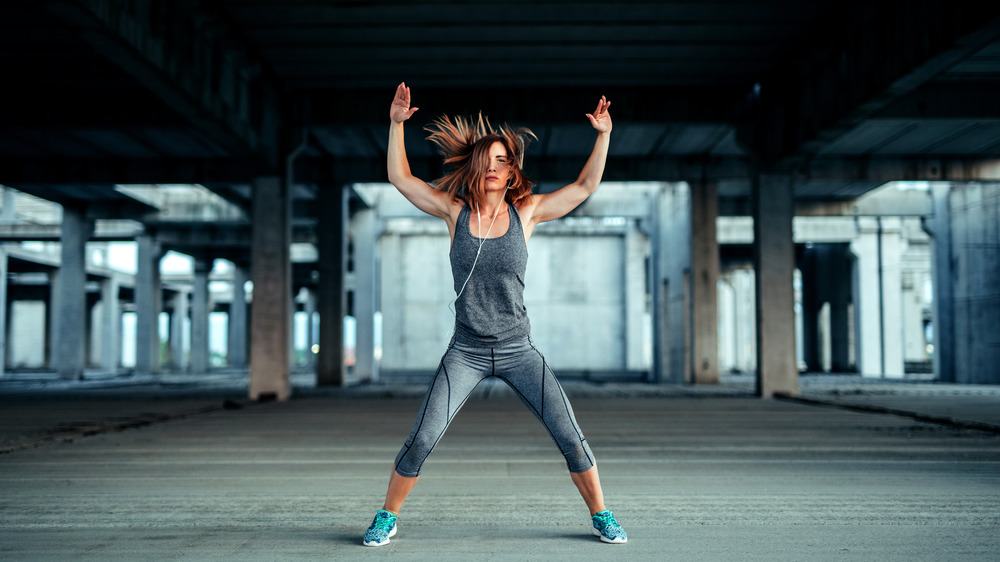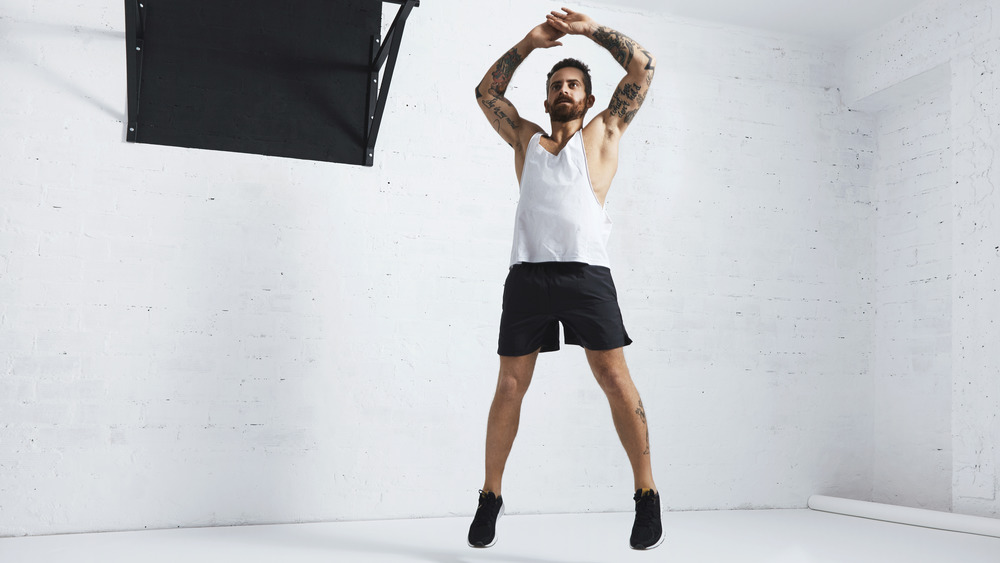You Might Be Doing Jumping Jacks Entirely Wrong
Anyone who attended gym class during school will know what jumping jacks are. But did you know the benefits of doing jumping jacks? According to Jonathan Mike (via Insider), a strength and conditioning coach and professor of exercise science and sports performance at Grand Canyon University in Arizona, "Jumping jacks have a wealth of benefits like mobility, increased blood flow, training in the frontal plane, and overall joint motion." However, there's a right way and a wrong way to do them and if you want to reap these benefits, it's crucial you get the technique right.
"Jumping jacks fall into the category of exercises most people assume are extremely simple so don't require any attention to technique," New Jersey personal trainer Nick Occhipinti told The Greatist. And while we all know that the starting position is as simple as standing straight with your feet hip distance apart and arms by your side, the physical jump is where the problems usually start.
Jumping jacks should be completed in quick succession
As Keaton Ray, CSCS, trainer and co-founder of MovementX physical therapy in Oregan, explained to Women's Health, it's important that when you bring your arms up to the side and above your head and jump your feet out past your hips, you don't jump out too far as this can cause injury — aim to jump just outside your hips. She also notes that you need to be quick to reverse the movement if you want to get the most out of the exercise. In other words, the faster, the better!
Like most exercise, it's important to pay attention to your body. "If it hurts, evaluate and fix your technique," Occhipinti told The Greatist. "If it still hurts, maybe jumping jacks are not the best exercise for you," he added. And if you have a lower body injury, it's best to skip it altogether. "Anybody with an acute ankle, knee, or hip injury like an ankle sprain, knee ligament tear, or hip impingement syndrome may want to temporarily avoid jumping movements," he warned.


